Wood bread, frog legs, and other dishes that were not invented from the good life
Categories: Food and Drinks
By Pictolic https://pictolic.com/article/wood-bread-frog-legs-and-other-dishes-that-were-not-invented-from-the-good-life.htmlOnce upon a time, these dishes were invented in order to survive in the hungry years. But their recipes have taken root, and they are still prepared, and even considered delicacies. In this issue, read the stories of the appearance of "hungry recipes", which are still in use today.
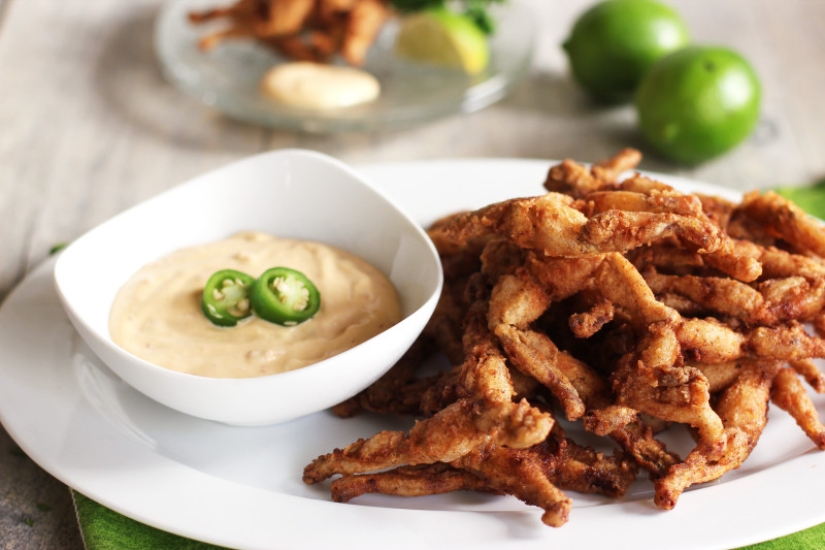
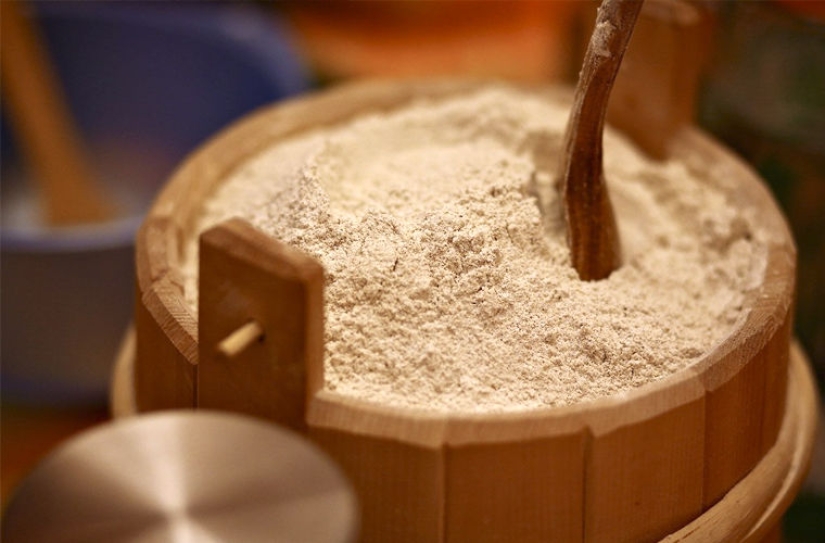
The past. In the Middle Ages, wood was an integral part of the diet of the poor population. Of course, it is not necessary to imagine skinny poor people chewing a log in a hungry year. Only the bark of the tree was used, namely the inner part of it, which is called bast and has a pinkish hue and a pleasant aroma.
The dried bast was ground into flour, which during crop failures was used to bake bread in its pure form, but usually mixed with rye or wheat. So they used the bark of linden, elm and birch, and pine flour was considered the most delicious. Wood flour has a bitter taste, but is rich in vitamin C, which helped the inhabitants of Northern Europe to fight scurvy.
Modernity. Now few people remember about wood bread. But thanks to its useful properties, wood rolls gradually reappear on the table of Europeans. In Sweden, it has been proven that birch flour helps in the fight against excess weight, high blood pressure and the risk of developing diabetes. So now you can buy it in health food stores.
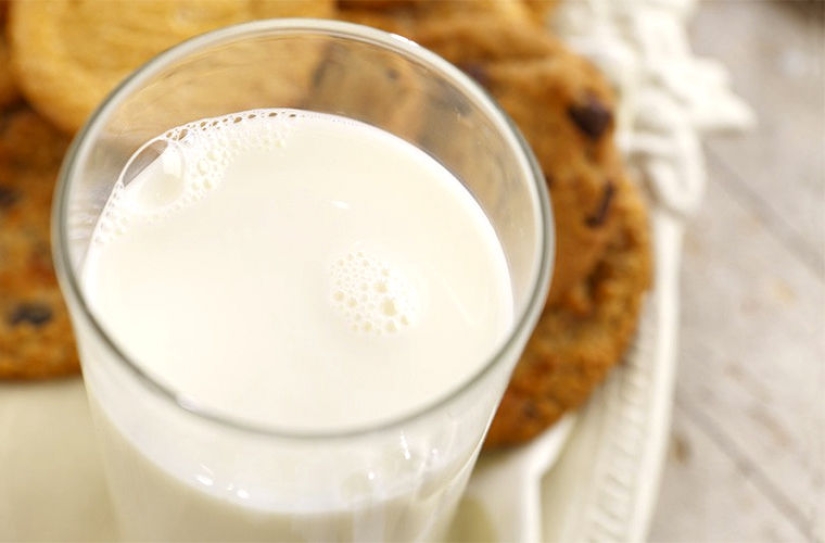
The past. Buttermilk (buttermilk) — skimmed cream, a product obtained in the production of butter from cow's milk. This unappetizing liquid was considered a by-product of production, waste. In its pure form, it was drunk only in times of famine.
Modernity. Now buttermilk is used both in its natural form and for processing into fermented milk products, beverages and dietary cheeses. It is also used in the baking and confectionery industries. It is a traditional ingredient for Irish bread on soda and baking cupcakes. It is used to cook porridge, prepare coffee and use it for dressing cottage cheese. Low-calorie and rich in nutrients, buttermilk is especially useful for people with excess weight and cardiovascular diseases.
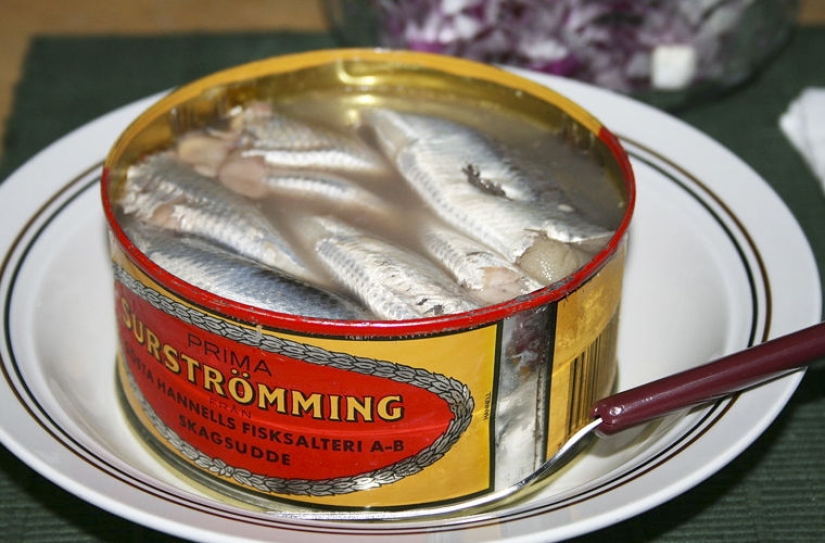
The past. In the XVI century, during the hostilities waged by the Swedish king Gustav I Vasa with the German city of Lübeck, there was a shortage of salt supplies. In this regard, the herring was salted with less salt, which disrupted the normal canning process, and the product began to ferment. In the conditions of war and famine, fermented herring began to be eaten. To everyone's surprise, it did not taste like rotten meat at all, and someone even liked its sour taste. The fish is not rotten, but "sour". There were rumors about the new dish, and since salt was not cheap even in peacetime, in Northern Sweden, where it was not easy to get fresh food, the "fermentation" of herring became a common method of preserving it among the poor.
Modernity. Surstreming, despite the smell, is now served at banquets and is considered an exquisite delicacy. It's not usually eaten every day. The fish has become popular all over Sweden. You can use surstreming with beer or schnapps, with sandwiches and salad. And especially the brave ones eat it with lingonberries and drink milk.
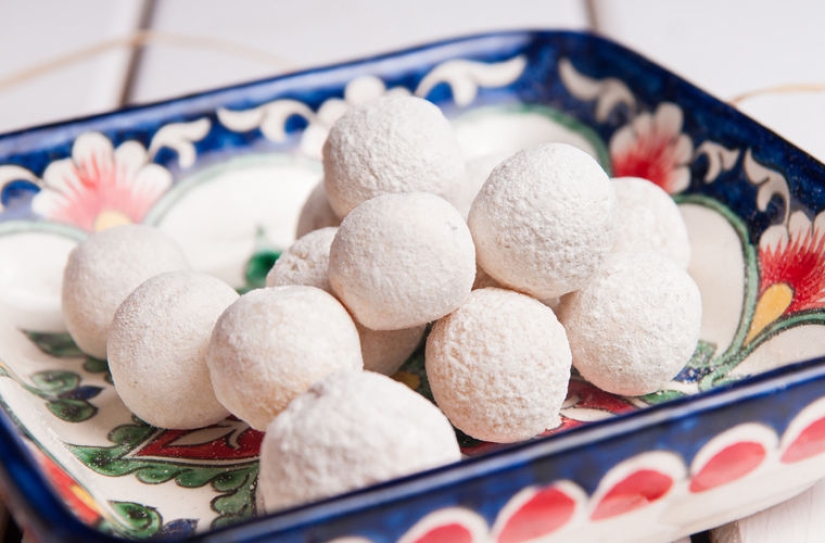
The past. This dry fermented milk product was invented by the nomadic peoples of Central Asia to prepare food for the future and survive the hungry times.
To prepare this dish, you need two ingredients: curdled milk and salt. It is usually white balls (sometimes flattened) the size of an apricot or smaller, sometimes made in the form of cylinders by squeezing in the palm of your hand. Kurt is rich in protein, carbohydrates, calcium and various vitamins. The positive quality of the product is long-term preservation and resistance to temperature changes, it can be stored for up to five years.
Modernity. In Central Asian markets, you can see snow-white kurta mountains in the form of balls or tortillas. This is a universal product, on the basis of which they cook thick soups, prepare sandwiches, add it to a salad instead of the usual hard cheese. The simplest recipe from kurt is a milk drink. It is enough to dilute a cheese ball in a glass of water and get a thick fermented milk drink with a rich creamy taste. And the real fans of Kurt just "husk" him like seeds.

The past. The description of this northern " delicacy "may seem disgusting to many: it is" prepared " from the whole carcass of a walrus, seal or deer by fermentation under a press. As a result, this dish is full of corpse poisons and is deadly for those who are not used to eating it since childhood.
When preparing copalchen from venison, choose the largest, fattest and healthiest animal. For several days, he is not given food to clear his digestive tract. Then they are strangled (so as not to damage the skin). After that ... they plunge it into the swamp. Sprinkle with peat, branches and stones and leave for several months. Then they take it out and eat it.
A more common variant — copalchen from walrus or seal-is prepared on the same principle, but without the" application " of the swamp. The corpse is placed in the skin of any other animal suitable for the "size", let out the air, and then buried in the gravel on the surf line-also for several months. Take out in the winter, when the meat will be frozen. Frozen kopalchen is cut into thin slices, which are rolled into tubes. The tubes are dipped in salt and eaten with the raw lungs of a newly slaughtered deer.
Kopalchen has been known since ancient times. Such meat is high in calories, so only a few pieces are enough for an adult man to work all day in the cold, without freezing and without experiencing physical exhaustion.
Modernity. Among the peoples of the North, kopalchen is now considered a delicacy. The corpse poison contained in the rotted meat will definitely lead to severe poisoning or death if a stranger decides to try such a dish, but for local residents this is a real treat. And it is not surprising, because they are prepared for such a diet from the cradle: babies are given a piece of meat or fat instead of a pacifier.
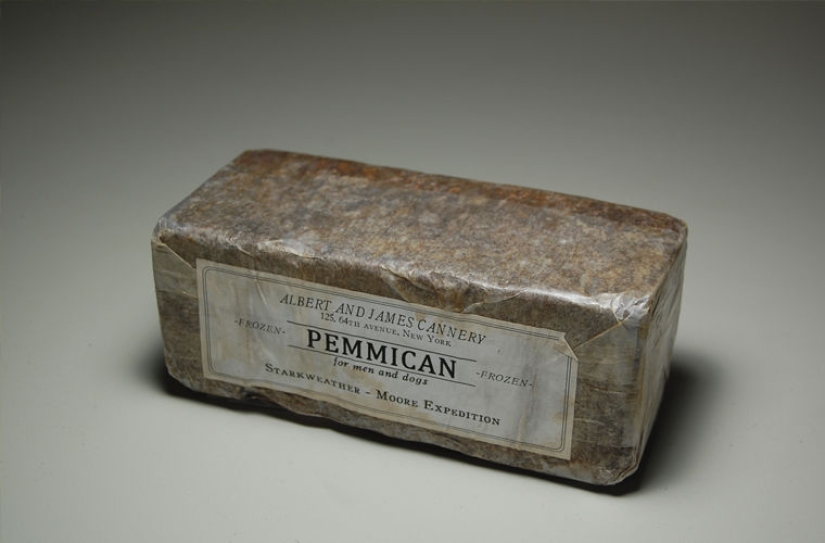
The past. Dried meat is a mandatory component in the survivalist's diet. However, the food is unbalanced and is not stored for very long. Pemmican!" This invention of the Indians is dried or dried ground buffalo meat, as well as lard, crushed dried berries or berry juice, sometimes spices. The result was a highly nutritious food with a low weight and volume, which made transportation easier. At the end of the XIX century, the compactness and versatility of the pemmican attracted the attention of travelers, especially the conquerors of the Arctic and Antarctic. By the beginning of the XX century, pemmican became the main meat product of polar travelers.
Modernity. By the middle of the XX century, in connection with the improvement of transport vehicles of polar expeditions, the use of pemmican was gradually abandoned, since it was found that it could not be considered a full-fledged diet, and a long-term pemmican diet was harmful to the digestive organs and metabolism. Although the traditions are not forgotten: the Indian dish can often be found in the backpacks of tourists who make long-distance routes.
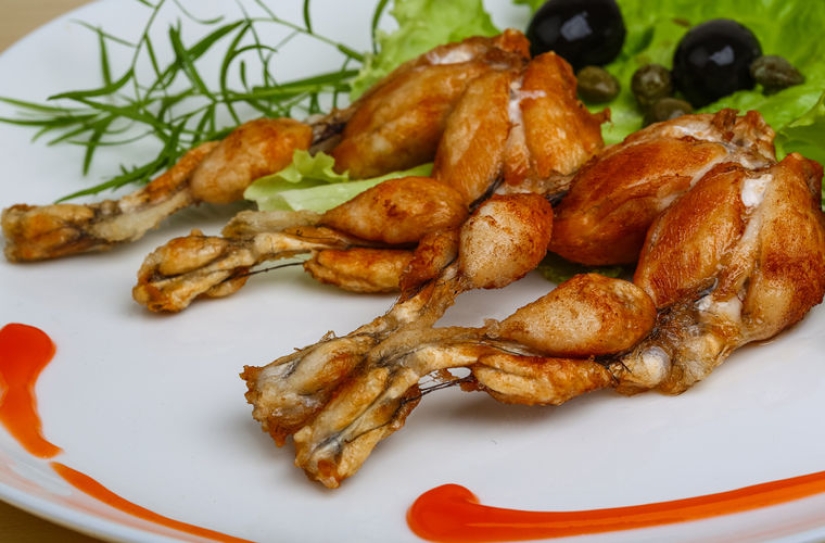
The past. Although eating frog meat is stereotypically associated with the French, it was practiced by many peoples of the world. The French eat less frogs than the Swiss, and certainly less than the Chinese, who have a saying that you can eat everything except the moon and its reflection in the water. Nevertheless, it is the frog legs that are considered a traditional French dish.
The first dish of frogs appeared in France in the XIV century during the Hundred Years ' War with England as a forced means of combating widespread hunger. Although there are other versions — that the frog dish appeared on the tables of the poor because of the ban on hunting in the lands of noble lords. And there is also an opinion that this happened due to the ban of the Catholic Church on meat dishes during Lent, and frogs, as well as turtles living in water, were considered fish at that time.
Modernity. Now frog legs are considered the most exquisite delicacy, which can be enjoyed in good French restaurants. They are prepared not only in France, but also in Spain, Italy, Portugal, and Greece. This dish is also popular in Southeast Asia. The delicacy is widely spread in Chinese cuisine, but there it is prepared mainly at home. The production of frog legs on a commercial basis is widespread in Vietnam. They are frozen, packaged, and exported around the world.
Keywords: Delicacy | Hunger | Recipes | Dishes | Food and drinks
Post News ArticleRecent articles

Winter is a special time of the year, someone is afraid of her, someone is waiting for snow days to build a snowman or go down the ...

The heroes of their photos are used to humiliate others, cheerfully and carelessly shoot everything on the phone and post the ...
Related articles

In our days many on the table there are all sorts of imported delicacies. And at the feast every how can Excel: sushi, salads with ...

A dream of a beautiful figure, but can't take myself in hand and, finally, to abandon all of these chocolates, sweets, biscuits and ...

Thank you to the native party that there is no vodka on the weekend! But don't cry, my Marusya — I'll get drunk on cologne! ...

Every day, photographers around the world are looking for new ways to tell stories or capture something we haven't noticed ...